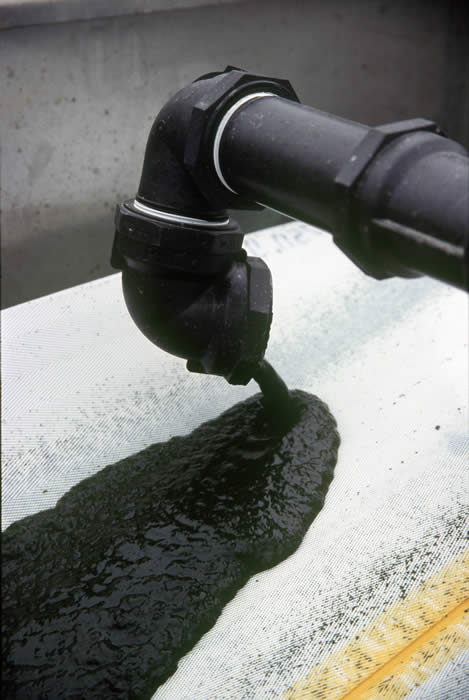 The fourth contribution to the Imagining 2020 series of essays comes from Pete Fowler, who takes a look at producing biofuel from algae as a sustainable means of meeting our liquid fuel needs. If you’d like to contribute your vision of a low-carbon future for New Zealand, please get in touch — details at the end of the piece.
The fourth contribution to the Imagining 2020 series of essays comes from Pete Fowler, who takes a look at producing biofuel from algae as a sustainable means of meeting our liquid fuel needs. If you’d like to contribute your vision of a low-carbon future for New Zealand, please get in touch — details at the end of the piece.
I was very pessimistic until last year about our prospects of weaning off fossil fuels before reaching an irreversible tipping point. Some positive feedback loop would kick in, like higher temperatures releasing trapped methane from arctic permafrost and seafloor sediments. Increased atmospheric methane, about 30 times as potent a greenhouse gas as CO2, would further raise temperatures. End result? Within a few decades Earth would be as hot as Venus. The whole of humanity would go the way of the civilisations described by Jared Diamond in Collapse, who could see they were on a track to self destruction but were unable to alter course.
In 2008 I read one of the most positive books ever written; The Singularity Is Near, by Ray Kurzweil. He points out that whichever way you measure the rate of technological change, it accelerates exponentially. Moore’s law for instance predicted in 1965 that artificial intelligence would double in complexity and halve in cost every two years. It’s held for the last 44 years, and if it continues to hold until 2020, we’ll then have machines approaching human intelligence.
Kurzweil maintains that right now, nanotechnology, genetic engineering and robotics are the main drivers of technological advance. The production of crude oil from atmospheric CO2 and water will be mostly a triumph of genetic engineering.
Nature took hundreds of millions of years to produce the crude oil which, in about 200 years, we’ll have exhausted. If we can speed up this process, and produce all our liquid fuels and chemical industry feedstocks, and some stock feed and human food from atmospheric CO2 and waste, by a process many times as efficient as farming, without diverting farmland or native bush, on the same timescale as the rate at which we deplete fossil fuel, we’ll have solved the problems of peak oil and global warming, and a few lesser problems.
Conventional biofuel production isn’t particularly efficient. It requires fuel inputs for farm vehicles, and it either diverts farmland away from food production or destroys native bush. Only an average 300 watts per square metre world wide of sunlight is available for photosynthesis, and natural photosynthesis isn’t a very efficient way to convert sunlight to chemical energy. The most efficient fuel crop is sugar cane, fermented to ethanol. It yields up to three harvests a year. But it’s labour and land intensive, requires fuel for farm machinery and transport, it increases the cost of food and only grows in the tropics. Because all conventional crops need further processing in different places before they reach the petrol pump or dinner table, their total number of carbon kilometres is typically several times the distance round the world.
What’s needed is a continuous process, not a batch process like conventional harvesting. The world is running out of land suitable for conversion to farming. An algae reactor can be set up on land which is unsuitable for farming or anything else, and can still produce more than 15 times as much fuel per hectare as canola or palms. Unlike natural crude, it can yield a product free of contaminants like nitrogen, sulphur or benzene. The first generation will use sunlight for their energy source, but later, as energy sources like pebble bed fission reactors and ultimately nuclear fusion become available, these will drastically increase yield.
Some natural cyanobacteria can double their mass every hour. With genetic engineering, high temperature varieties, and varieties which fix their own nitrogen from the atmosphere are possible. The obvious raw materials to use are untreated sewage and atmospheric CO2, helping to solve two environmental problems. Eventually, when energy sources other than sunlight are available, the demand for sewage will outstrip supply, and other sources of micronutrients will be needed. But as with conventional agriculture, micronutrients are in principle recyclable. All you need is a way to reclaim elements like phosphorus, sulphur, iron, molybdenum and the rest. This is feasible with a bioreactor producing algae, but not on a conventional farm, where they drain away, and not only are they wasted, but they cause problems like nitrate in drinking water and eutrophication in waterways.
The only high tech part of producing green crude is the final step; converting algae into oil. There’s no reason why bioreactors can’t be operated in the world’s poorest countries, as well as everywhere else where a demand for the products exists. Being a factory, rather than an outdoor farm operation, it can be conducted close to population centres, or anywhere else. CO2 is available everywhere, and low-grade water supplies unfit for human consumption, almost everywhere.
An obvious location for a bioreactor is right next to a thermal power station, where there’s waste CO2, waste heat and transmission loss free electricity, but in principle one can operate anywhere.
The algae is harvested continuously, 24/7. Currently four technologies exist to extract the oil:
- Dry the algae and press the oil out. This is the simplest method.
- Dissolve the oil in a supercritical fluid like CO2 at high pressure. When pressure is reduced the oil separates out and the CO2 is reused. This is the most promising method.
- Hexane solvent. Hexane, a hydrocarbon similar to petrol, dissolves the oil. The hexane is then separated from the oil and reused.
- Ultrasound breaks open the algae cells, and the oil is pressed out.
The remaining dry matter is a high protein stock feed.
A bioreactor producing algae which are processed into liquid fuels, foods and petrochemicals, is a machine for converting waste, including CO2, into essential commodities which are getting scarcer every year. The only input needed is energy. It’s a closed loop. There is no waste and no collateral damage to the environment.
*************The “Imagining 2020″ Series of articles is a creative commons discussion effort coordinated by Scoop.co.nz , Hot-Topic.co.nz and Celsias.co.nz. Contributions are welcome from all comers. Please see the introduction for an explanation of the project and instructions for how to contribute.
Like this:
Like Loading...


 Blenheim company Aquaflow which works on the production of bio-fuel from algae, and whose progress Hot Topic has reported on several times (follow the Aquaflow tag) has announced a new venture, this time in the US. They will be working with a Honeywell company at an industrial site in Hopewell, Virginia. The aim of the project, supported by a $1.5 million cooperative agreement with the US Department of Energy, is to capture CO2 from exhaust stacks and use it to enhance algae growth in nutrient wastewater from the manufacturing facility.
Blenheim company Aquaflow which works on the production of bio-fuel from algae, and whose progress Hot Topic has reported on several times (follow the Aquaflow tag) has announced a new venture, this time in the US. They will be working with a Honeywell company at an industrial site in Hopewell, Virginia. The aim of the project, supported by a $1.5 million cooperative agreement with the US Department of Energy, is to capture CO2 from exhaust stacks and use it to enhance algae growth in nutrient wastewater from the manufacturing facility. The fourth contribution to the Imagining 2020 series of essays comes from Pete Fowler, who takes a look at producing biofuel from algae as a sustainable means of meeting our liquid fuel needs. If you’d like to contribute your vision of a low-carbon future for New Zealand, please get in touch — details at the end of the piece.
The fourth contribution to the Imagining 2020 series of essays comes from Pete Fowler, who takes a look at producing biofuel from algae as a sustainable means of meeting our liquid fuel needs. If you’d like to contribute your vision of a low-carbon future for New Zealand, please get in touch — details at the end of the piece.